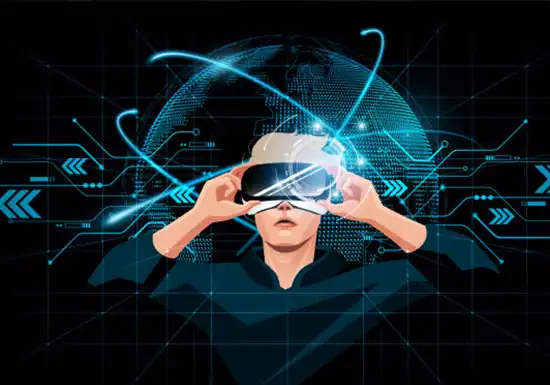Seeing the Future: Augmented Reality’s Expanding Role in the Retail Industry
Updated: May 27, 2025

Picture this: You walk into a retail store and stand before a smart mirror that instantly displays clothing options tailored to your measurements. With a few simple gestures, you can cycle through different styles, preview color options, and see how garments fit without ever entering a changing room. Your smartphone syncs with the display, storing your preferences and enabling a digital checkout.
This scenario isn’t science fiction — it’s the trajectory of retail. Augmented Reality (AR) is fast becoming the bridge between physical and digital commerce. By superimposing digital content onto real-world environments, AR is redefining how consumers browse, interact with, and purchase products.
Reimagining The Retail Experience
AR’s appeal lies in its ability to personalize and enhance the customer journey, offering customers tailored product recommendations, immersive try-on experiences, and real-time feedback. This level of customization not only anticipates consumer needs but also fosters deeper engagement and stronger brand loyalty.
Virtual try-on features allow consumers to test makeup, glasses, or apparel without stepping into a store. Beauty giants like L’Oréal and Ulta have embedded AR into their mobile applications, enabling customers to apply products virtually and receive real-time feedback.
In the furniture and home goods space, AR has been equally transformative. IKEA’s Place app, for example, allows users to visualize how sofas, tables, and decor would look within their own living spaces, down to scale and color accuracy. This “try-before-you-buy” model reduces returns and builds consumer confidence.
In addition, AR-driven navigation tools within physical stores, like Lowe’s “Vision Navigation,” help customers locate products more efficiently. This fusion of digital assistance and physical browsing strengthens in-store engagement, a significant advantage at a time when foot traffic faces increasing competition from e-commerce.
Beyond customer-facing experiences, AR is enhancing internal operations and marketing strategies. Retailers like Nfinite use AR and AI to automate product visualization, creating immersive 360-degree product views that improve online shopping accuracy. Their data shows that shoppers are more likely to purchase a piece of furniture if they can view it in their home environment using their smartphone camera.
This capability significantly streamlines content creation. Instead of staging physical photoshoots, retailers can generate contextual product images through AR and CGI, dramatically improving scalability and cost-effectiveness. This speeds up time-to-market while aligning with consumers’ growing expectations for personalized, engaging content.
Interactive AR advertisements are another growing frontier. Snapchat and Instagram have introduced AR filters for branded experiences, allowing users to interact with products directly within the social media ecosystem—a trend particularly resonant with younger consumers.
Despite its promise, implementing AR at scale comes with real challenges. High development costs, technology integration hurdles, and concerns over data privacy are among the top barriers identified by retail executives. For example, capturing spatial data from customers’ homes to offer AR experiences raises questions about how this data is stored and used.
Moreover, legacy IT systems can struggle to support AR applications, requiring significant infrastructure upgrades. Retailers must invest not only in technology but also in talent to harness AR’s full potential.
Preparing the Next Generation of Retail Innovators
At UoPeople, we prepare students for emerging technologies like AR. Whether they are working in business, marketing, or computer science, graduates must not only understand the technical foundations of AR but also develop ethical and strategic frameworks for its implementation.
Our educational programs focus on AR tools, cross-disciplinary collaboration, and responsible innovation, skills that are essential for tomorrow’s retail leaders. Through a curriculum that emphasizes critical thinking and real-world application, UoPeople ensures that graduates can lead responsible innovation in a rapidly evolving retail landscape.
To succeed in an AR-driven retail future, leaders must embrace a digital-first mindset. This means making bold investments in emerging technology while fostering collaboration across departments. As McKinsey notes, the future of retail will depend heavily on an organization’s ability to build new digital capabilities quickly and iteratively.
Augmented Reality is no longer a novelty — it is a strategic enabler transforming every facet of retail, from how products are marketed to how they are experienced and sold. While challenges remain, forward-thinking leaders can harness AR to create richer, more personalized consumer experiences and drive competitive advantage.
As the technology continues to evolve, one thing is clear: retailers who adopt AR early and thoughtfully will not only meet the expectations of modern shoppers but also shape them.

